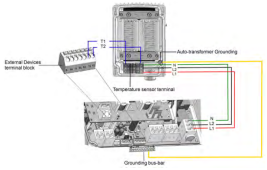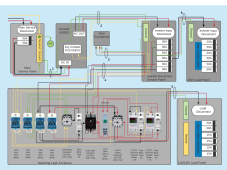??????
New Member
- Joined
- Sep 25, 2021
- Messages
- 57
Good idea - however I can't think of a way to auto-disconnect the AT when running off-grid that doesn't introduce the cold start problem - needing a human-in-the-loop to physically close the AT contactor to bootstrap the system. We could add this - but we'd have a system that needs an external power source (be it a human with a screwdriver, or a battery-backed-up servo or similar) to cold-start.In the current schematics, you guys are not disconnecting the input side of the AT, only disconnecting the loads from the AT.
Also re: high current contactors, something like this 200A generac ATS may work, but it looks like it's just a glorified knife switch that's operated by two opposing solenoids. Correct me if I'm wrong since I don't have personal experience with an ATS like this, but if it's solenoid actuated in both directions of the throws, that means we'd need a power source to 'fail safe'. If this were mechanically (spring) fail-safe, then this would work. Maybe it is? Anybody know?





